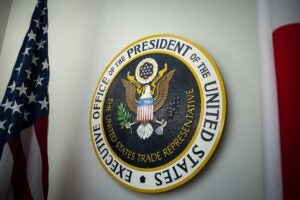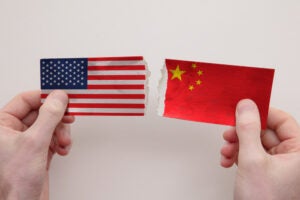Excerpts from Dan Harris’ China Law Blog.
In China, the United States and the New Normal, I called the US-China trade war the “New Normal” and I predicted a “diminished future for foreign companies” manufacturing in China. I also said that since “the inception of the US-China trade war we have been saying that we do not see its end because we have always seen it as more than a trade war.” That was in 2018 and I still believe China’s relations with the West will continue to decline.
…But when China’s spy balloon illegally entered U.S. territory I started feeling like my views on China have become the majority in the United States, Canada, Australia, Japan and the EU, among other places. Since the U.S. government and the EU started talking last week about how China likely would start arming Russia, I’ve been feeling like pretty much “everybody” agrees with me on the big risks involved with doing business in or with China, but they are raising me one. I am increasingly hearing from people who are convinced that the world has ZERO use for China and we should expect it to return to the stone age within a year or so.
…I do not doubt that China would love to arm Russia. Russia is doing poorly in its war against Ukraine, and this not only makes China look like a sucker for having supported it, it also weakens China’s ability to threaten Taiwan. Most importantly, Russia’s Ukraine debacle is weakening Russia and a weak Russia is not in China’s interest. Russia is a bulwark for China against the West and China this makes the weakening of Russia very bad for China. This is especially true since China has very few true allies and what true allies it has other than Russia — Belarus, Cuba, Iran, North Korea, Syria, Myanmar, and Venezuela — are not doing well themselves. This is why China would love to arm Russia
But China isn’t stupid. It knows that arming Russia will infuriate the countries on which it economically depends and it knows that crossing this line will likely lead to sanctions, trade restrictions and tariff escalations. China cannot afford for these sorts of things to happen, especially now. I do not think China will take the risk of arming Russia now.
Most importantly, I do not think a decision to leave China should be based on the China arming Russia issue. We should know within the next few months whether China will arm Russia or not, and if China does not arm Russia, this issue will become irrelevant. And if China does arm Russia, not starting a move out of China now will only mean a few months in delay.
The far bigger and important geopolitical China risk is Taiwan. I would be guessing if I were to predict whether China will invade or blockade China, but I’m not guessing when I say that if that does happen, any and all bets regarding China will be off. To me the only big question at that point is how much a China-Taiwan war will impact manufacturing and logistics in other Asian countries, and I have no prediction on that either. I will say though that many of those companies moving their production from China to Latin America (as opposed to elsewhere in Asia) list minimizing their China-Taiwan risks as A reason, but not usually THE reason.
Anyway, the above is my long-winded way of saying to expect an increase in the gloom and doom about China over the next few months, but to not let that impact you making your decisions based solely on what makes sense for your company. China is getting riskier and all of the data points point to that continuing. Nonetheless, there are still some companies that should not leave China. If you are making money from China or you cannot yet move your manufacturing out of China and the benefits of you staying in China outweigh whatever harm to your reputation you might face by doing so, you should stay. There are a surprising number of these companies and many of my firm’s lawyers are still kept busy helping them navigate China’s legal landscape.








